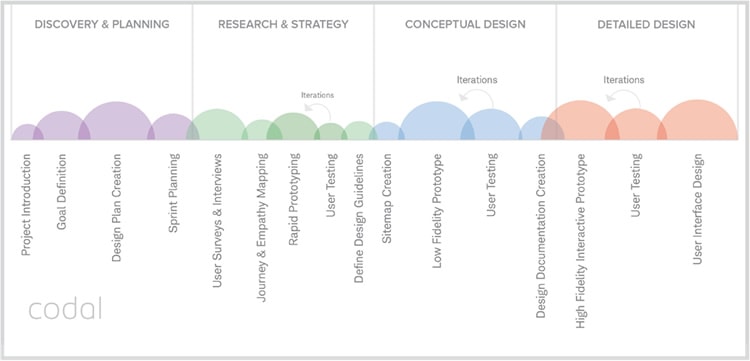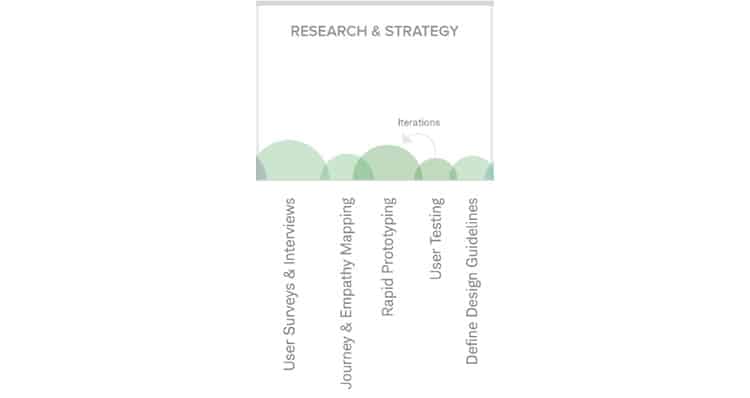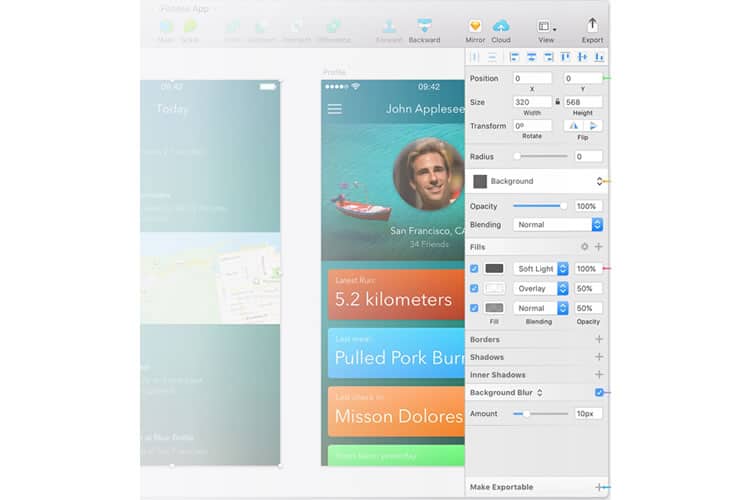Not unlike design itself, the cost of a user experience designer can be a bit of an abstract concept. The business tangibles of UX work – timelines, milestones and costs are usually based on estimates. Thus, forming educated guesses often comes from years of real-world design experience.
Adding to the nebulous nature of a UX designer’s price tag is the variety of factors it depends upon. The project’s scope, the amount of testing required, the experience of the designer, the complexity or functionality required from the product, and whether you are going through a freelancer or a UX design agency all contribute to the final bill.
This sort of undefined pricing is reflected when you search the Internet for typical UX designer rates. Upwork delivers a breakdown by deliverable that totals between $110 – $270 per hour, where others give a range from $2000 to $35,000 (based on the quality of the app). World-class applications, backed by exhaustive research or an Agile process, can run even higher.
But no matter how you parse the price tag, quality UX design is expensive. It is a laborious, time-consuming process, and it is also essential to the success of your platform. It engages users, drives conversions, and can boast an astronomical ROI.
Since it is such a crucial investment, it is prudent to understand what this cost goes into. While every UX designer has a different method, there are staples of each process standard to most UX practitioners or companies.

The above diagram shows for instance, the UX design process of the digital agency I work for, Codal. I will be using it as an example in this article for the kinds of components typically seen in a UX practitioner’s methodology.
1. Discovery and Planning
First, it is imperative to understand that a majority of UX work happens before the designers even boot up Sketch (a favourite digital design program). The distinction between UX and UI (user interface) is a crucial one. If UI is how the car looks, UX is how it rides. If UI is the dating profile, UX is the date itself.
Crafting an experience, a genuine, engaging one, begins with careful planning and clear project definition. This phase usually calls for the designer taking on a secondary role as a business analyst, recognising and understanding the client’s goals or requirements.
Designers also begin performing early research needed for the product’s design. The platform may be geared towards an industry or audience the designer is unfamiliar with, and a top-notch UX practitioner needs to understand the problem space before they can provide solutions.
By the end of this phase, a statement of work is typically delivered to the client, the project’s cost and timeline have been estimated, and a design plan has been formulated. If the agency uses an agile-based process, sprint planning commences this stage as well.
2. Research and Strategy
A sizable portion of a UX designer’s cost is going to cover this stage, as it is one of the most fundamental aspects of the UX design process. Characterised by in-depth user research, testing, and early prototyping, the results of this phase inform the remainder of the design process.
There is a variety of research methods UX practitioners can employ to learn about the user base, but the most common practices usually involve surveys, interviews, or focus groups. Within these broader categories are many different strategies to put them into practice, but most UXers are going to be using one of these to explore the user base of the product they are designing.

It sounds simple enough, but the logistics behind this can be difficult. These are essentially experiments, and the scientific method can be notoriously slow. Participants need to be identified, incentivized and tested repeatedly. The UX researcher needs to ensure the purity and fidelity of the survey or interview results, and be able to parse both quantitative and qualitative data.
From this research comes some form of journey or empathy mapping, as well as the creation of a user persona – a representative surrogate of the user base, born from the research data collected.
Early prototypes can be constructed, and rapidly tested with the users to validate important design choices. This is a typically iterative process that, like everything else in the UX design method, can take a variable amount of time and resources.
3. Conceptual Design
Finally, the UX designers can begin, well, designing. This phase takes the conclusions drawn from the research and discovery phases and starts to build upon the foundation laid by the early prototyping in the previous stage.
A full sitemap is created, delineating not only every component and element of the product but how they are all related and connected to each other. The cursory wireframes formed in the previous stage give way to more detailed, but still low-fidelity prototypes.

The prototype’s low fidelity allows designers to remain agile, making periodic adjustments and refinements without committing to an unvalidated design choice and wasting precious time. It is a cornerstone of the agile process, which many digital agencies subscribe to.
Mirroring the previous stage, these prototypes are then heavily tested with the user base. To facilitate quality UX, user testing needs to permeate the entire design process. Users are the ends to our design means.
4. Detailed Design
The final stage of the UX design process is often the one people think of when they hear UX: the creation of the user interface. But before that occurs, there is usually some final testing with a more detailed prototype, one that accurately simulates how the final product will look and feel.
After final testing, the designer must transform the prototype into a pixel-perfect interface, the stunning paint job on the car they have laboured over for the past months. User interface design often consists of creating style kits or branding guides.
To sum up an excellent user interface design creation in one word: detail. No element is too minuscule to avoid scrutiny, as the designer must carefully consider typography, colour theory, and even accessibility requirements when crafting a visual experience.
Typically, the UI creation heralds the end of the UX design process, but that does not necessarily mean the designer’s involvement in the product is finished. As the product heads to development, very often, the designer may need to clarify their vision for the developers, and ensure the product maintains its usability as it is constructed.
Wrapping It Up
Before we part ways, I would like to reiterate that the process used here is just an example (the one am most familiar with!). The UX designer you hire may not subscribe to some of the methods or deliverables mentioned in this article. And that is perfectly fine. This exercise was to show what goes into the UX design process, and why it is priced the way it is.
Despite the variance in methods across designers, most quality UXers are going to employ some form of the process showcased above, with the same four themes:
- Discovery / Planning
- Research / Strategy
- Early, or Conceptual Design
- Detailed UI Design
This is what the cost of a UX designer covers, but do not let the brevity of the list fool you. Optimal UX design is a serious undertaking because of its importance. Your users are the endgame to your app’s success. The cost of a UX designer may be steep, but quality UX is priceless.
Source: Usability Geek
Author: Sean McGowan

